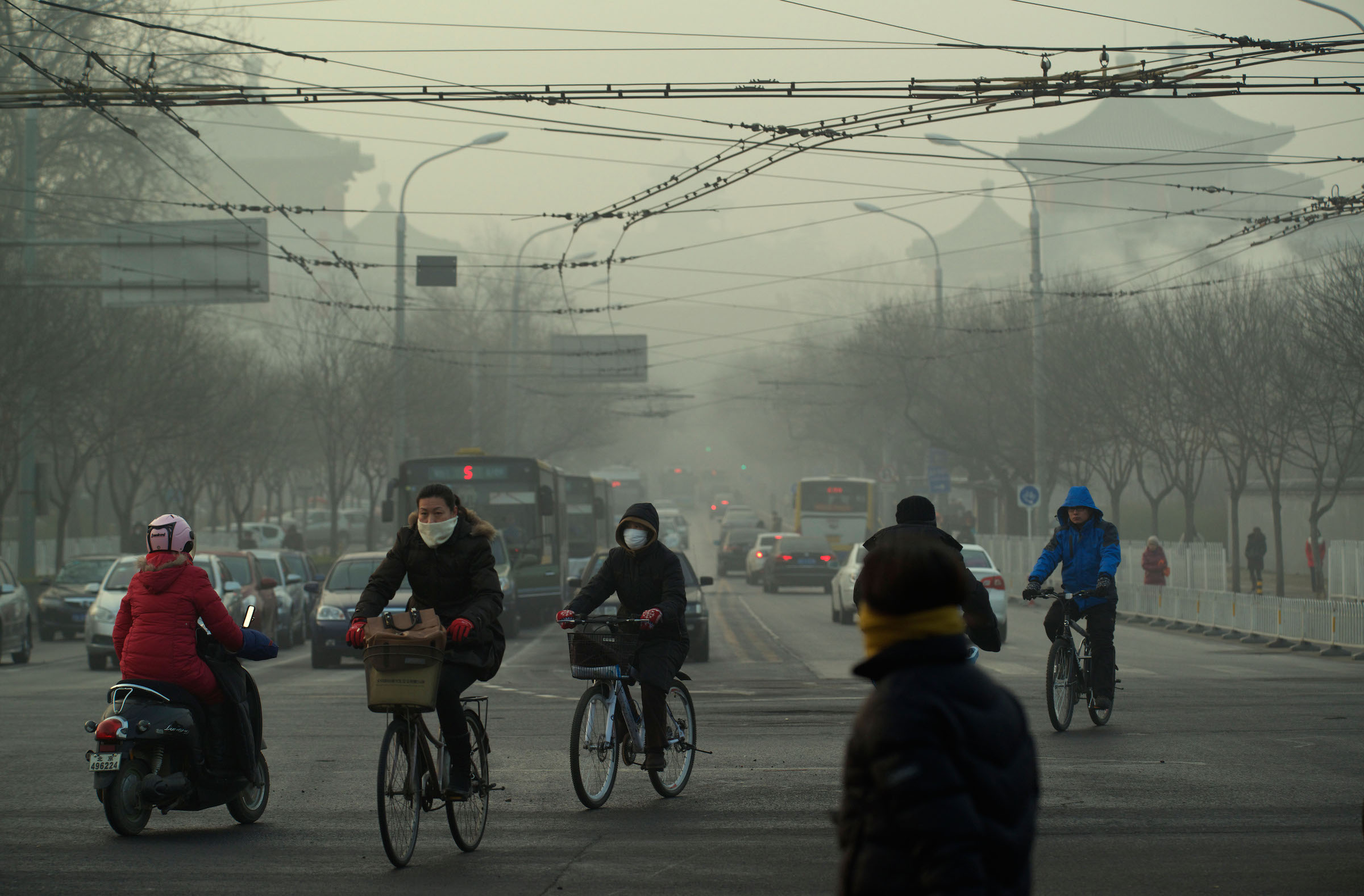As China’s policymakers mull the contents of the country’s next Five-Year Plan, chinadialogue has been asking a range of contributors what they would like to see in the development blueprint.
Air pollution is a top – if not the top – priority for the Chinese leadership in the upcoming 13th Five-Year Plan. With 2013 designated the “year China’s air pollution went mainstream”, China still has substantial work left to do to meet its air targets. The Ministry of Environmental Protection’s 2013 State of the Environment Report has revealed just how challenging this is: while 86.5% of surveyed cities met national standards for sulphur dioxide ambient levels, only 39.2% did so for nitrogen dioxide, and a mere 4.1% of cities met new standards for PM2.5 released in 2012.
The more dismal figures illustrate the challenge of introducing new environmental goals in China’s five-year plans. Despite a two-and-a-half year grace period from the time the new nitrogen-dioxide targets were introduced in the current plan, many facilities are struggling to hit them. A major part of the challenge is technical: more than two-thirds of China’s power plants require pollution-abatement equipment to reduce emissions of the gas. In one case in Hebei province, one facility was found emitting at 800 times the allowable limit.
The nitrogen-dioxide example is a cautionary tale for leaders as they consider what air-pollution goals to include in the 13th Five-Year Plan. It is almost certain that targets for fine particulate matter (PM2.5), which is firmly linked to severe air pollution and its health consequences in the public eye, will be included. Interim targets for PM2.5 have already been introduced for 11 provinces, and provincial leaders have been required to sign responsibility contracts to ensure their completion.
If introduced in the 13th Five-Year Plan, these targets will likely only be applied to major industrialised provinces or key urban agglomeration areas – namely, the three key regions Beijing-Tianjin-Hebei, Yangtze River Delta and Pearl River Delta. Much emphasis has already been placed on these places through the 12th Five-Year Plan and recently released Air Pollution Action Plan. On a per-capita basis, the three key regions have much less ground to make up in tackling nitrogen dioxide and sulphur dioxide than others, where progress has lagged. The 13th Five-Year Plan may need to adjust targets if provinces outside the key regions are still trailing at the end of this year.
But is including PM2.5 targets in the next five-year plan the answer to China’s air pollution problem? Probably not. PM2.5 is entirely different from sulphur dioxide and nitrogen dioxide, given its ambient formation from multiple sources and its ability to form secondarily through chemical reactions in the atmosphere, causing “airpocalyptic” episodes, especially during winter months. Weather, climate, and humidity play a role in ambient PM 2.5 concentrations – all factors governments cannot control.
The 13th Five-Year Plan must account for the complexity of addressing PM 2.5 therefore, perhaps by delivering sector-level benchmarks to provide more detailed and specific targets to tackle the root causes of its formation. The ambient concentrations would then serve as a gauge of whether efforts are effective.
China’s leaders should also remember that targets are only one mechanism by which to address air pollution. Other means, including greater research and development to better understand the root causes of difficult air pollutants, as well as innovative technological solutions can help too.
Andrew Moffat, a Masters of Environmental Management candidate at Yale University, contributed to this article








